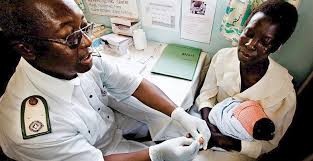Source: avert.org
The international health body, which released the new HIV testing policy at the end of November, made the recommendation following compelling evidence that rapid diagnostic tests (RDTs) and enzyme immunoassays (EIAs) produce faster and more accurate results than laboratory-based methods. These newer testing strategies also cost less because they are less complex and can be conducted by health workers with varying degrees of training and experience, rather than specialists.
Because western blotting and line immunoassays can only be performed in laboratories, health facilities have to send blood samples away for testing. This leads to delays in informing people about their HIV status and, for those who are positive, it can also delay treatment initiation.
A systematic review commissioned by the WHO found western blotting and line immunoassays also result in a higher number of indeterminate diagnoses than newer testing strategies, which means people then need to retest. Not only does this cause uncertainty for the individual, if this request is not taken up the opportunity to diagnose is then lost.
The evidence review found that nearly half of all indeterminate results generated by laboratory-based methods related to people living with HIV. This means a significant proportion of HIV positive people experience delays to starting treatment due to these outdated diagnostic methods, which is not only detrimental to their health but also increases the likelihood of onward transmission.
In sharp contrast, RDTs and EIAs enable people to know their status in a much shorter time period, meaning they can start treatment more quickly if they are HIV positive. The relative-immediacy of these newer methods also means that people who test HIV negative, but are deemed to be at high-risk of infection, can be linked to PrEP straightaway rather than having to wait.
Because non-specialist staff can carry out RDTs or EIAs, HIV testing using these methods can be conducted in community-settings as well as health facilities. This means people from criminalised groups who may be fearful of using clinics despite being at heightened risk of HIV, those who cannot afford the costs associated with clinic visits, and people who are reluctant to access public testing services due to stigma may be more likely to get tested.
Although most countries already favour RDTs, some are still using western blotting and line immunoassays to confirm HIV infection. This is common in a number of Western European countries as well as in parts of Eastern Europe, Asia and the Pacific. For these countries, moving to more efficient testing methods will initially take time and extra resources but will achieve a greater impact and reduce costs in the longer term. WHO’s policy brief contains a technical checklist of things countries in this position should consider when making the switch, such as the need to retrain laboratory staff to take on supervisory and quality assurance roles.
